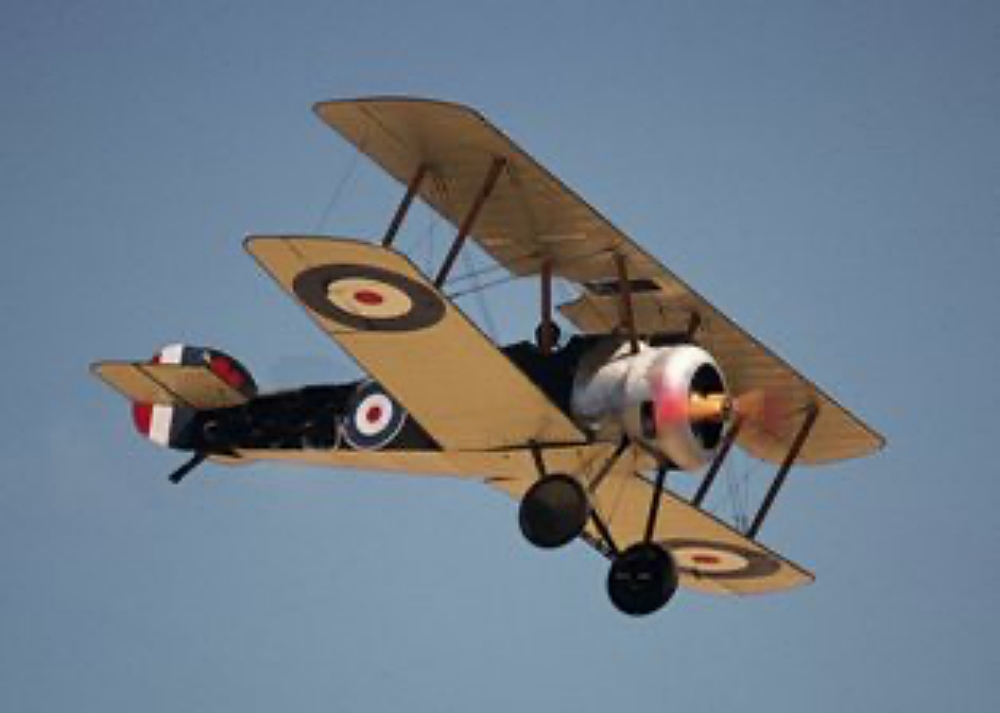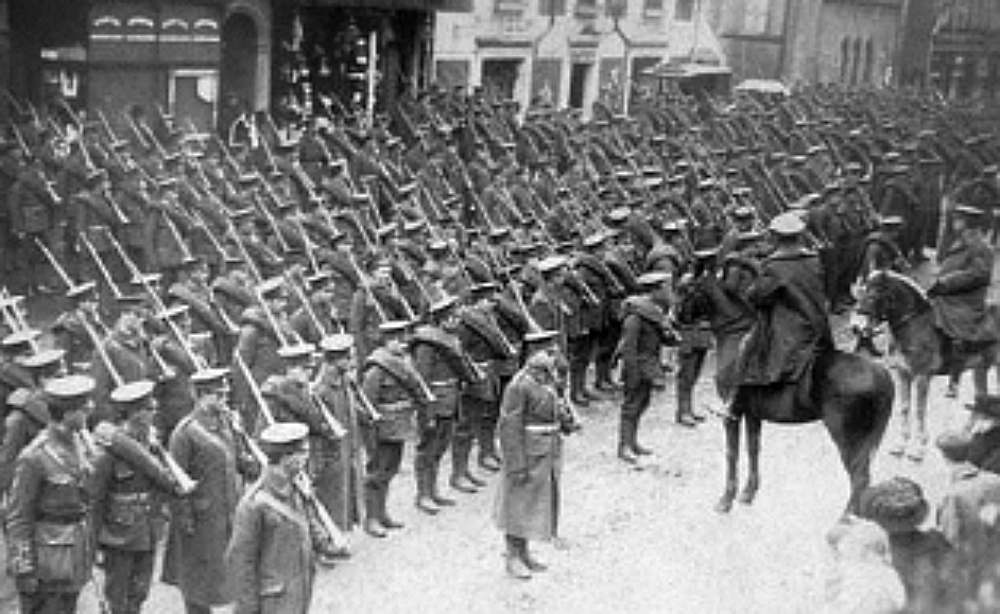Strife on the home front
Florence Faulkner, of Kinnoull Cottage, Angmering, together with her two companions, looked up startled as a spluttering aircraft skimmed over their heads at a height of less than 100 feet.

It was Tuesday, August 21, 1917, and, until that moment, the First World War being fought so bloodily on the Western Front in France could have been 1,000 miles from the trio strolling peacefully on the Downs towards the western slope of Highdown Hill.
The single-engine biplane that shattered the tranquillity of that sublime Sussex summer’s evening, and the triple tragedy that followed, was a graphic reminder of how dangerous flying was in its early days. It also confirmed that by 1917, First World War flying casualties were no longer confined to the Western Front.
Lieutenant Harries’ fatal crash at the foot of Highdown that day turned out to be the first of an unprecedented series of tragic events over the following three weeks.
PILOTING the plane that intruded on the downland reverie was Lieutenant W. T. Harries. He had only recently arrived in England from his home in South Africa and immediately volunteered for the Royal Flying Corps.
Although he had previously seen active service in Africa, this was Lieut Harries’ first experience of flying. He gained his RFC commission just 22 days before making the ill-fated flight from Shoreham Airport and, at the subsequent inquiry into the crash, his logbook showed he had spent a total of only three hours and 20 minutes in the air.
Florence Faulkner, who witnessed his crash, told the coroner at the inquest that the first she and her companions had seen of Harries was when his plane passed overhead at less than 100 feet.
“The engine sounded slightly rough, but otherwise seemed to be running quite easily,” she recalled. “The plane swooped over the trees of Ecclesden Farm, then suddenly nose-dived into the ground.
“The pilot appeared to jump clear at the last moment and I ran over to him. But he showed no signs of life. I then realised that he was already dead.”
Asked whether the young pilot was strapped into his plane, Lieut Harries’ flight commander said he always told his pilots not to strap themselves in as, in the event of an accident, he believed they would have a better chance of escape.
“In any case, it would be impossible for any pilot to jump from a plane when it was in a nose-dive,” he said.
“The natural result of the aircraft making such a move would be to throw the pilot off the seat. His falling from the plane as it hit the ground probably gave witnesses the impression that he had jumped.”
Was it by a distressing coincidence that only 13 days later, another young South African trainee pilot, Lieut Thomas Kinkhead, was flying over the centre of Worthing when his plane also appeared to develop engine problems?
After endeavouring to “hold his machine up” and reach an emergency landing spot, the pilot lost all flying power and, from a height of 250ft, nose-dived into the ground near Lanfranc Road, Worthing. Lieut Kinkhead died instantly.
His flight commander told the inquiry: “Although Lieut Kinkhead had only been up for one solo flight, he had flown for three hours and 15 minutes under dual-control and was quite a promising pilot.
“I was also flying over Worthing at the same time, at about 2,000ft, when I noticed Lieut Kinkhead’s machine about half a mile away and flying at 3,000ft.
“Suddenly, it spiralled down to about 2,000ft, at which point he began to do steep, vertical banks before descending a further 1,000ft.
“As he continued to drop, I realised his engine had failed. I flew towards him, but he appeared to stall his machine and suddenly nose-dived out of my view.”
Less than a week later, the disaster trail swung to the west and yet another young Royal Flying Corps pilot under training met his end, this time in the sea off what was then described as “the sleepy village of Rustington”.
This third fatal casualty was a 22-year-old Canadian, Lieut Antoine Leger, a trainee pilot with only three hours’ flying experience.

He had flown alone along the coast from Shoreham Airport when, according to the official report, “he was in the neighbourhood of Broadmark Lane, Rustington, when a mishap occurred, and his aircraft, after heading over the sea, fell into the water some 300 or 400 yards from the shore.
“By the time patrol vessels and other motor craft arrived on the scene from Littlehampton, all trace of the airman had disappeared.”
The wrecked aircraft was towed ashore and efforts to locate Lieut Leger continued throughout the night. His body was recovered the next morning.
By this time, local residents were beginning to ask questions the authorities were unwilling to answer.
Surely three such closely related tragedies in the same number of weeks could not have been entirely coincidental.
Perhaps the three fatalities in three weeks were linked in some dubious way.
Censorship, always justified to some degree in time of war, prevented this local concern being addressed during the three inquiries that followed the fatal incidents.
Verdicts on the first and second deaths were recorded simply as “accidental” and the third as, “drowning through the aeroplane accidentally falling into the sea”.
Lacking credible official information, the public began to draw its own conclusions, in this case influenced by the precarious war situation at the time.
For, by the summer of 1917, the Great War was in its third year and, from the Allied standpoint – particularly on the Western Front in France, things were at a low ebb.
The first ever war in the air had escalated and the shortage of pilots for planes supporting our troops was desperate.
Hundreds more were needed if the Allied forces were to survive.
At home, potential pilots were being recruited from every available source and, in the rush to get them into aircraft over the Western Front, their flight training was cut to the bare minimum.
So could insufficient training have been the link between the three successive deaths among the RFC pilots training at Shoreham?
Many local residents thought so in 1917, but we are never going to know for certain.